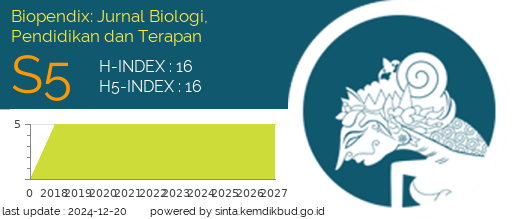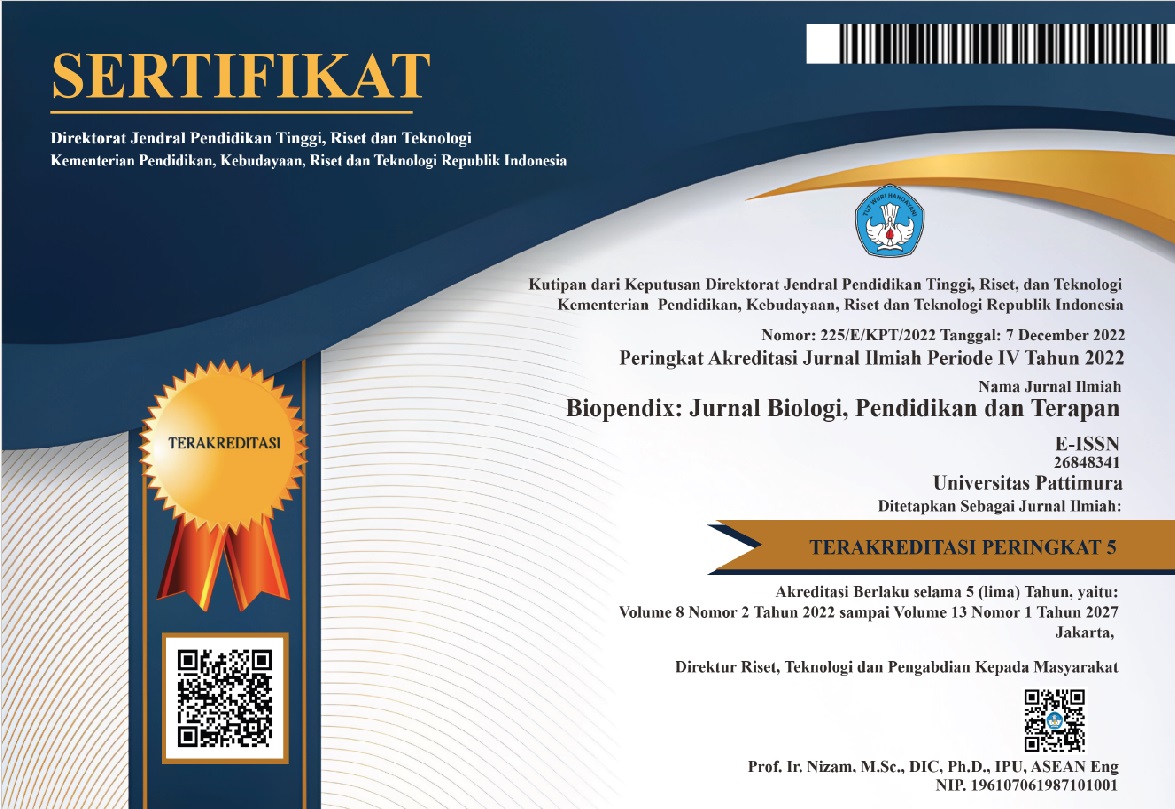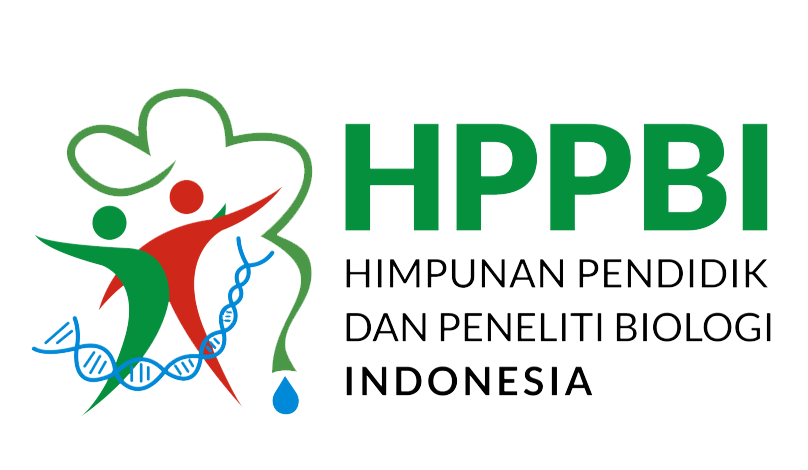ANALISIS KADAR LEMAK TOTAL PADA BUAH SALAK MERAH (Salacca edulis) DI NEGERI RIRING DAN NEGERI BURIA KECAMATAN TANIWEL KABUPATEN SERAM BAGIAN BARAT
Abstract
Background: In Maluku Province, especially in West Seram Regency (SBB) Taniwel District, salak plants were found with unique thick yellow flesh with a red tinge, called red salak. Negeri Riring and Negeri Buria are samples of red salak cultivation centers that are at different altitudes, allowing for differences in primary metabolite content, especially total fat content in red salak plants.
Methods: Analysis of total fat content was carried out in several stages, namely, the red salak fruit preparation stage where the skin and flesh of the salak fruit were peeled and separated. After that, the sample was dried in an oven for 6x24 hours and ground into powder. The total fat content test stage used the Soxhlet method, where this stage produced a solution used to calculate the total fat content.
Results: The results of the study showed that red salak fruit contained Negative Total Fat in both locations at different altitudes. The highest fat content in red salak fruit was obtained at 0.54995% in Negeri Buria. Meanwhile, the lowest fat content in red snake fruit was obtained at 0.52935% in Negeri Riring.
Conclusion: different growing altitudes affect the total fat content in red snake fruit, where the higher the growing location, the lower the fat content, which is also supported by several internal and external factors.
Downloads
References
Bayu, T.P., dan Zubaidah, E. (2015). Karakteristik Fisik Kimia dari Ekstrak Gula Pasir dengan metode maserasi. Malang: Universitas Brawijaya.
Elly, S.S., Theopilus, W.W., Dominggus, R. (2018). Short Communication: Genetic Diversity of Salacca edulis from West Seram District, Maluku, Indonesia based on morphological character and RAPD profile. Biodiversitas Journal of Biological Diversity, 19(5), 1777-1782.
Harahap, H.M.Y.; Eva S. B.; Luthfi A.M.S. (2013). Identifikasi Karakter Morfologis Salak Sumatera Utara (Salacca sumatrana Becc.)
Di Beberapa Daerah Kabupaten Tapanuli Selatan. Jurnal Online Agroekoteknologi,.1(3), 833-841.
Herawati, W., Murwanto, A., Nafi’ah, Z., Ningrum, A.M., dan Samiyarsih, S. (2018). Variation analysis of three Banyumas local salak cultivar (Salacca zalacca) based on leaf anatomy and genetic diversity. Biodiversitas 19(1), 119-125.
Marsigit, W. (2016). Karakteristik Morfometrik, Proporsi, Kandungan Fenol
Total dan Profil Fenol Daging Buah, Biji, Kulit Alpukat (Persea
americana, Mill) Varietas Ijo Panjang dan Ijo Bundar . Jurnal Agroindustri, 6(1), 18–27.
Nelza, A. (2016). Studi fenologi, karakter hasil dan mutu benih tanaman kacang koro pedang (Canavalia ensiformis L.) pada perbedaan kondisi naungan dan pemupukan. Bogor: Institut Pertanian Bogor.
Purwantara, S. (2018). Studi Temperatur Udara Terkini Di Wilayah Jawa Tengah dan DIY. Geomedia: Majalah Ilmiah dan Informasi Kegeografian, 13(1), 41–52.
Triastutik, U.; Yuyun; Esteria P. (2017). Pelatihan Pengolahan Buah Salak Untuk Meningkatkan Potensi Salak. Teknobuga,(2),24-33.
Wijaya, A. A., Nur, O. K., & Harti, O. R. (2018). Influence of Grow Environment Factor To Growth and Yield Soybean Plant on Saturated Soil Condition. Jurnal Ilmu Pertanian dan Peternakan, 6(2), 131–139.

Copyright (c) 2025 Debi Lisa Manuhuttu, Alwi Smith, Sriyanti Imelda Aksamina Salmanu

This work is licensed under a Creative Commons Attribution-ShareAlike 4.0 International License.
Authors who publish with BIOPENDIX: Jurnal Biologi, Pendidikan dan Terapan agree to the following terms:
- Authors retain copyright and grant the journal right of first publication with the work simultaneously licensed under Creative Commons Atribution-ShareAlike 4.0 International License (CC BY-SA 4.0) that allows others to share the work with an acknowledgment of the work's authorship and initial publication in this journal.
- Authors are able to enter into separate, additional contractual arrangements for the non-exclusive distribution of the journal's published version of the work (e.g., post it to an institutional repository or publish it in a book), with an acknowledgment of its initial publication in this journal.
- Authors are permitted and encouraged to post their work online (e.g., in institutional repositories or on their website) prior to and during the submission process, as it can lead to productive exchanges, as well as earlier and greater citation of published work.




 2
2






